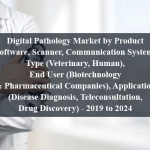OVERVIEW
The Wearable Healthcare Devices Market is projected to grow significantly from USD 16.2 billion in 2024 to an estimated USD 32.4 billion by 2029, reflecting a CAGR of 14.6% during the forecast period. Wearable healthcare devices are advanced technologies designed to monitor and track various health parameters, providing real-time data to users and healthcare providers. These devices include fitness trackers, smartwatches, wearable ECG monitors, blood pressure monitors, and glucose monitors. The increasing prevalence of chronic diseases, advancements in wearable technology, and the growing demand for remote patient monitoring are driving the market’s growth.
The market’s expansion is also supported by rising healthcare expenditure, increased adoption of digital health solutions, and the integration of advanced technologies such as artificial intelligence (AI) and machine learning (ML) in wearable devices. However, challenges such as high costs of advanced wearable devices, concerns about data privacy, and the complexity of device interoperability need to be addressed to sustain market growth.
Geographically, North America and Europe dominate the wearable healthcare devices market due to their advanced healthcare infrastructure, significant investments in healthcare, and high adoption rates of innovative healthcare technologies. The Asia Pacific region is also expected to witness substantial growth, driven by increasing healthcare expenditure, growing awareness of digital health, and the expanding healthcare sector.
Market Dynamics
Drivers:
The primary driver of the Wearable Healthcare Devices Market is the increasing prevalence of chronic diseases. Conditions such as diabetes, cardiovascular diseases, and hypertension require continuous monitoring to manage effectively. Wearable healthcare devices provide a convenient and non-invasive solution for monitoring vital health parameters, enabling early detection of abnormalities and timely intervention. The rising incidence of chronic diseases is driving the demand for wearable devices that can track health metrics in real-time, improving patient outcomes and reducing healthcare costs. Additionally, advancements in wearable technology, such as the development of more accurate sensors and longer battery life, are enhancing the functionality and reliability of wearable healthcare devices, contributing to market growth.
Another significant driver is the growing demand for remote patient monitoring. Patients and healthcare providers are increasingly recognizing the benefits of remote monitoring, which allows continuous health tracking without the need for frequent hospital visits. Wearable healthcare devices enable remote monitoring by providing real-time data on various health parameters, such as heart rate, blood pressure, and glucose levels. The integration of advanced technologies, such as AI and ML, in wearable devices is further enhancing their capabilities, enabling predictive analytics and personalized health insights. The rising preference for remote patient monitoring and the continuous advancements in wearable technology are driving the growth of the wearable healthcare devices market.
Key Opportunities
The Wearable Healthcare Devices Market presents numerous opportunities for growth and innovation, particularly in the development and integration of advanced technologies. One prominent opportunity lies in the increasing use of AI and ML in wearable devices. AI-powered wearable devices can analyze vast amounts of health data in real-time, providing actionable insights and predictive analytics to users and healthcare providers. The integration of AI with wearable healthcare devices is expected to drive market growth by offering more intelligent and personalized health solutions. Additionally, AI-powered devices can facilitate early detection of health issues, improve patient adherence to treatment plans, and enhance overall health management.
The growing focus on expanding the applications of wearable healthcare devices presents another lucrative opportunity for the market. While wearable devices are commonly used for fitness tracking and chronic disease management, there is increasing interest in exploring their potential for other applications, such as mental health monitoring, sleep tracking, and rehabilitation. Research and development efforts are being conducted to evaluate the safety and efficacy of wearable devices for these applications. The expanding applications of wearable healthcare devices are expected to drive market growth by providing new solutions for a broader range of health conditions and patient needs. Vendors that invest in research and development to explore new applications and improve existing wearable technologies are well-positioned to capitalize on this market trend.
Restraints:
One of the significant restraints in the wearable healthcare devices market is the high cost of advanced wearable devices. The development and deployment of sophisticated wearable technologies, such as AI-powered devices and advanced sensors, require substantial investments in research, manufacturing, and marketing. The high upfront costs and ongoing maintenance expenses can be a barrier to adoption, particularly for consumers with limited budgets. Additionally, the cost of wearable devices can impact patient affordability and access to advanced health monitoring solutions. To overcome this restraint, vendors need to offer cost-effective solutions and flexible pricing models that cater to the diverse needs of consumers and healthcare providers.
Wearable devices collect and transmit sensitive health data, raising concerns about data security and privacy. Ensuring the protection of user data and compliance with regulatory standards, such as the General Data Protection Regulation (GDPR) and the Health Insurance Portability and Accountability Act (HIPAA), is essential for market success. Additionally, the complexity of device interoperability, which involves seamless integration with various health platforms and electronic health records (EHRs), further complicates the market landscape. Ensuring data privacy and interoperability is critical for the successful deployment and operation of wearable healthcare devices. Vendors must navigate these challenges and invest in robust data security measures and interoperability solutions to meet the stringent requirements of the healthcare industry.
Regional Information:
- North America
North America remains a significant market for wearable healthcare devices, characterized by advanced healthcare infrastructure, high adoption rates of innovative healthcare technologies, and substantial investments in healthcare research and development. The region’s strong presence of leading medical device manufacturers and the high focus on enhancing patient care drive market growth. The increasing prevalence of chronic diseases, such as diabetes and cardiovascular diseases, is propelling the adoption of advanced wearable healthcare solutions in the region. Furthermore, stringent regulatory requirements and the need for effective remote patient monitoring encourage healthcare providers to invest in high-quality wearable devices. However, the high cost of advanced wearable devices and regulatory complexities remain challenges that need to be addressed to fully capitalize on the market potential.
- Europe
Europe leads in the adoption of wearable healthcare devices, driven by stringent regulatory requirements, significant investments in healthcare infrastructure, and a strong commitment to improving patient outcomes. The region’s focus on innovation and technological advancement fuels the demand for advanced healthcare solutions. Countries like the UK, Germany, and France are at the forefront of implementing wearable healthcare technologies to enhance patient care capabilities and ensure compliance with regulatory standards. The European Union’s regulations, such as the General Data Protection Regulation (GDPR) and the Medical Device Regulation (MDR), mandate stringent data protection and quality assurance measures, further driving market growth. However, economic uncertainties and the complexity of regulatory compliance necessitate strategic planning and risk management to navigate the market landscape effectively.
- Asia Pacific
The Asia Pacific region is expected to witness the highest growth rate in the wearable healthcare devices market due to rapid digital transformation, increasing healthcare expenditure, and the expanding healthcare sector. Countries like China, India, and Japan are investing heavily in advanced healthcare solutions to support business growth and enhance patient care capabilities. The region’s expanding middle class and rising disposable incomes are also contributing to the increasing adoption of wearable healthcare devices in various sectors such as hospitals, diagnostic laboratories, and home healthcare. Governments in the region are implementing initiatives to promote digitalization and support the growth of the healthcare economy, further driving market growth. However, challenges related to regulatory compliance, fluctuating economic conditions, and the need for skilled healthcare professionals necessitate localized strategies and market insights for successful market penetration.
Recent Developments:
In October 2023, Google launched Google Pixel Watch 2.
Key market Players:
Frequently Asked Questions
1) What is the projected market value of the Wearable Healthcare Devices Market?
– The Wearable Healthcare Devices Market is expected to reach an estimated value of USD 32.4 billion in revenue by 2029.
2) What is the estimated CAGR of the Wearable Healthcare Devices Market over the 2024 to 2029 forecast period?
– The CAGR is estimated to be 14.6% for the Wearable Healthcare Devices Market over the 2024 to 2029.
3) Who are the key players in the Wearable Healthcare Devices Market?
– The primary drivers for the Wearable Healthcare Devices Market include the increasing prevalence of chronic diseases, the growing demand for remote patient monitoring, and advancements in wearable technology. These factors are contributing to the rising demand for wearable healthcare devices. The integration of AI and machine learning in wearable devices is also driving market growth.
5) What are the restraints and challenges in the Wearable Healthcare Devices Market?
– The high cost of advanced wearable devices and concerns about data privacy are significant challenges in the market. These factors can limit the adoption of advanced wearable technologies. Additionally, the complexity of device interoperability and ensuring compliance with regulatory standards poses challenges that need to be addressed to ensure effective and secure health monitoring operations.
6) What are the key applications and offerings of the Wearable Healthcare Devices Market?
– Wearable healthcare devices are essential for continuous health monitoring and real-time data tracking in various applications, including chronic disease management, fitness tracking, and remote patient monitoring. They support advanced health management techniques, enabling accurate detection of health metrics and personalized health insights. These solutions improve patient outcomes by offering convenient and non-invasive health monitoring and facilitating early intervention. Additionally, wearable healthcare devices are crucial in settings such as hospitals, primary care, and home healthcare, enhancing the efficiency and effectiveness of health management.
7) Which region is expected to drive the market for the forecast period?
– Asia pacific is expected to have the highest market growth from 2024 to 2029
Why Choose Us?
Insights into Market Trends: Global Market Studies reports provide valuable insights into market trends, including market size, segmentation, growth drivers, and market dynamics. This information helps clients make strategic decisions, such as product development, market positioning, and marketing strategies.
Competitor Analysis: Our reports provide detailed information about competitors, including their market share, product offerings, pricing, and competitive strategies. This data can be used to inform competitive strategies and to identify opportunities for growth and expansion.
Industry Forecasts: Our reports provide industry forecasts, which will inform your business strategies, such as investment decisions, production planning, and workforce planning. These forecasts can help you to prepare for future trends and to take advantage of growth opportunities.
Access to Industry Experts: Our solutions include contributions from industry experts, including analysts, consultants, and subject matter experts. This access to expert insights can be valuable for you to understand the market.
Time and Cost Savings: Our team at Global Market Studies can save you time and reduce the cost of conducting market research by providing comprehensive and up-to-date information in a single report, avoiding the need for additional market research efforts.












